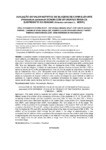Please use this identifier to cite or link to this item:
http://www.alice.cnptia.embrapa.br/alice/handle/doc/903917Full metadata record
| DC Field | Value | Language |
|---|---|---|
| dc.contributor.author | OLIVEIRA FILHO, G. S. de | pt_BR |
| dc.contributor.author | NEIVA, J. N. M. | pt_BR |
| dc.contributor.author | PIMENTEL, J. C. M. | pt_BR |
| dc.contributor.author | GONÇALVES, J. de S. | pt_BR |
| dc.contributor.author | POMPEU, R. C. F. F. | pt_BR |
| dc.contributor.author | LOBO, R. N. B. | pt_BR |
| dc.contributor.author | VASCONCELOS, V. R. de | pt_BR |
| dc.date.accessioned | 2011-10-24T11:11:11Z | pt_BR |
| dc.date.available | 2011-10-24T11:11:11Z | pt_BR |
| dc.date.available | 2011-10-24T11:11:11Z | pt_BR |
| dc.date.created | 2011-10-24 | pt_BR |
| dc.date.issued | 2002 | pt_BR |
| dc.identifier.citation | In: REUNIÃO ANUAL DA SOCIEDADE BRASILEIRA DE ZOOTECNIA, 39., 2002, Recife. A produção animal e a sociedade brasileira: anais. Recife: UFRPE: SBZ, 2002. 4 p. 1 CD-ROM. | pt_BR |
| dc.identifier.uri | http://www.alice.cnptia.embrapa.br/alice/handle/doc/903917 | pt_BR |
| dc.description | O presente trabalho foi desenvolvido com o objetivo de avaliar o valor nutritivo da silagem de capim elefante com diferentes níveis ( 0%, 5%, 10%, 15% e 20% ) de subproduto do processamento do abacaxi. Utilizou-se o delineamento inteiramente casualizado com 4 repetições. Após 30 dias, os silos (100 x 340,0mm) foram abertos e determinou-se os teores de matéria seca (MS), proteína bruta (PB), fibra em detergente neutro (FDN), fibra em detergente ácido (FDA), hemicelulose (HC), e valores de pH das silagens. A adição do subproduto do abacaxi diminuiu os teores de FDN e FDA e elevou os teores de HC e PB, principalmente no nível de 20% de adição de subproduto. Observou-se que os tratamentos 15% e 20% alcançaram níveis próximos ao nível mínimo de 30% de MS. A adição do subproduto não alterou os valores de pH nas silagens de capim elefante. Conclui-se que a adição do subproduto do abacaxi melhora o valor nutritivo da silagem de capim elefante e melhora a qualidade do material ensilado, mantendo a qualidade fermentativa da silagem uma vez que os valores de pH estão dentro da faixa de 3,8 a 4,2, que caracteriza silagem bem fermentada. EVALUATION OF THE NUTRITIVE VALUE OF SILAGE OF CAPIM ELEFANTE(Pennisetum purpureum) WITH DIFFERENT LEVELS OF BY-PRODUCT OF THE PINEAPPLE (ANANAS COMOSUS L., MERR.). ABSTRACT: This study aimed to evaluate the nutritive value of silage of elephant-grass containing different levels of by-product of the processing of the juice of the pineapple (0, 5, 10, 15 and 20%). A completely random design with four repetitions was used. After 40 days, the silos (100 x 340mm) were open and it was determined the level of dry matter (DM), crude protein (CP), neutral detergent fiber (NDF), acid detergent fiber (ADF), hemi-cellulose (HC) and values of pH of the silage. The addition of the by-product of the pineapple caused a decrease in the level of NDF and ADF and an increase in the level of HC and CP, mainly at the addition level of 20% of by-product. It was observed that the treatments 15% and 20% reached levels close to the ideal minimum level of DM of 30%. The addition of the by-product didn't change the pH values in the silage of elephant-grass. It was concluded that the addition of the by-product of the pineapple improves the nutritive value of the silage of elephant-grass and improves the quality of the material in the silos, keeping the fermenting quality of the silage once the pH values are within a range from 3,8 to 4,2, that characterizes a well fermented silage. | pt_BR |
| dc.language.iso | por | pt_BR |
| dc.rights | openAccess | pt_BR |
| dc.subject | Residues | pt_BR |
| dc.title | Avaliação do valor nutritivo de silagens de capim elefante (Pennisetum purpureum Schum) com diferentes níveis de subproduto do abacaxi (Ananas comosus L., Merr.). | pt_BR |
| dc.type | Artigo em anais e proceedings | pt_BR |
| dc.date.updated | 2019-09-25T11:11:11Z | pt_BR |
| dc.subject.thesagro | Pennisetum purpureum | pt_BR |
| dc.subject.thesagro | Capim elefante | pt_BR |
| dc.subject.thesagro | Silagem | pt_BR |
| dc.subject.thesagro | Aditivo | pt_BR |
| dc.subject.thesagro | Fermentação | pt_BR |
| dc.subject.thesagro | Resíduo | pt_BR |
| dc.subject.thesagro | Abacaxi | pt_BR |
| dc.subject.thesagro | Subproduto | pt_BR |
| dc.subject.thesagro | Ananas comosus | pt_BR |
| dc.subject.thesagro | Nutrição animal | pt_BR |
| dc.subject.nalthesaurus | Semiarid soils | pt_BR |
| dc.subject.nalthesaurus | Animal nutrition | pt_BR |
| dc.subject.nalthesaurus | Ruminant nutrition | pt_BR |
| dc.subject.nalthesaurus | Animal feeding | pt_BR |
| dc.subject.nalthesaurus | Fermentation | pt_BR |
| dc.subject.nalthesaurus | Silage fermentation | pt_BR |
| dc.subject.nalthesaurus | Industrial byproducts | pt_BR |
| dc.subject.nalthesaurus | Brazil | pt_BR |
| riaa.ainfo.id | 903917 | pt_BR |
| riaa.ainfo.lastupdate | 2019-09-25 -03:00:00 | pt_BR |
| dc.contributor.institution | GERALDO SOARES DE OLIVEIRA FILHO, Graduando; JOSÉ NEUMAN MIRANDA NEIVA, Universidade Federal do Ceará - UFC - Fortaleza, CE.; JOSE CARLOS MACHADO PIMENTEL, CNPAT; JOSEMIR DE SOUZA GONÇALVES, Graduando; ROBERTO CLÁUDIO FERNANDES FRANCO POMPEU, Graduando; RAIMUNDO NONATO BRAGA LOBO, CNPC; VÂNIA RODRIGUES DE VASCONCELOS, CNPC. | pt_BR |
| Appears in Collections: | Artigo em anais de congresso (CNPC)  | |
Files in This Item:
| File | Description | Size | Format | |
|---|---|---|---|---|
| AACAvaliacaodovalor.pdf | 52,79 kB | Adobe PDF |  View/Open |









